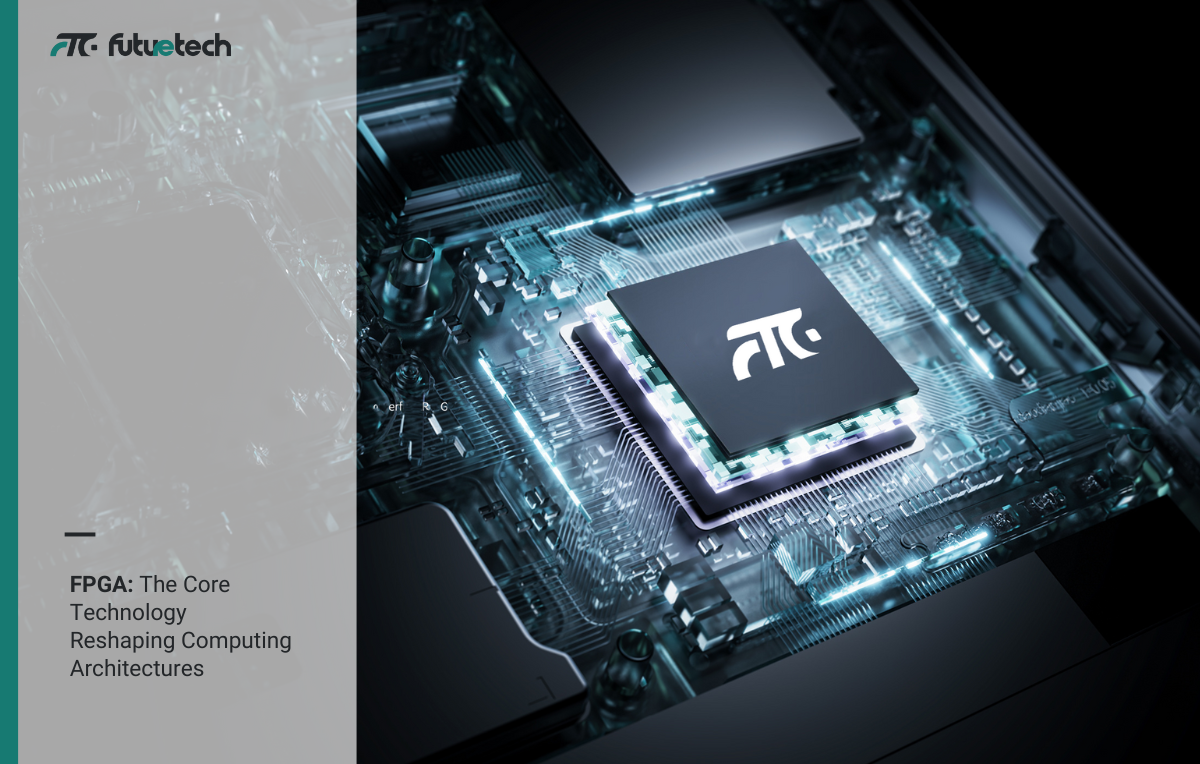FPGA: The Driving Force Behind Emerging Technologies
In recent years, the demand for computing power has surged across various industries, especially in AI inference, 5G communication, autonomous driving, and cloud computing. Traditional processors like CPUs and GPUs struggle to meet the growing demands for both performance and power efficiency. Recently, Microsoft announced large-scale FPGA deployment in its Azure cloud platform to accelerate AI inference, while Tesla integrated FPGA-based logic control in its latest autonomous driving chip to enhance decision-making efficiency.
Additionally, as RISC-V, edge computing, and low-power AI technologies continue to advance, more companies are adopting FPGA solutions for high-performance computing (HPC) and intelligent embedded systems.
But what exactly is FPGA, and why is it playing such a crucial role in computing evolution? In this article, we will delve into the technical advantages and architecture of FPGA, along with top product recommendations to help engineers and businesses choose the right solution.
FPGA Architecture & Core Technology
FPGA (Field Programmable Gate Array) is a reconfigurable integrated circuit that allows users to define its logic functions through programming. Unlike ASICs (Application-Specific Integrated Circuits), which have fixed functions after fabrication, FPGAs offer greater flexibility, making them widely used in communications, data processing, defense, and autonomous systems.
Key components of FPGA architecture include:
1. Programmable Logic Blocks: Consist of Look-Up Tables (LUTs), Flip-Flops, and Arithmetic Logic Units (ALUs), forming the core of FPGA computation.
2. Programmable Interconnects: Enable flexible connections between logic blocks to implement complex circuits.
3. Embedded Memory: Includes Block RAM (BRAM) and distributed RAM to store intermediate data and optimize computation efficiency.
4. DSP Modules (Digital Signal Processing): Essential for high-speed calculations such as FFT (Fast Fourier Transform), AI inference, and signal processing.
5. I/O Interfaces: Support various communication protocols, including PCIe, Ethernet, and LVDS, ensuring high-speed data exchange with external devices.
6. Clock Management: Includes PLL (Phase-Locked Loop) and MMCM (Mixed-Mode Clock Manager) for stable clock signal generation.
Why Choose FPGA? Key Advantages Over CPUs & GPUs
Compared to traditional processors, FPGA offers several distinct advantages:
● High Parallel Computing Power: FPGA architectures enable large-scale parallelism, significantly improving throughput for AI inference, signal processing, and other compute-intensive applications.
● Ultra-Low Latency: Unlike CPUs and GPUs, which execute instructions sequentially, FPGAs perform operations directly in hardware, dramatically reducing processing latency—crucial for real-time applications like autonomous driving and high-frequency trading.
● Power Efficiency: FPGAs activate only the necessary logic blocks, consuming less power than GPUs while maintaining high performance—ideal for edge AI and IoT applications.
● Flexibility & Reconfigurability: FPGA hardware can be reprogrammed via bitstream updates, allowing companies to iterate their designs quickly without the cost of new chip fabrication.
Top FPGA Products & Recommendations
Based on different application scenarios, here are some of the most popular FPGA models on the market:
| Brand |
Model |
Logic Cells(LUTs) |
Key Features |
Application Scenarios |
| Intel(Altera) |
Cyclone V |
25-301K |
Low power,integrated ARM Cortex-A9 |
Industrial control,edge computing |
| Intel(Altera) |
Stratix 10 |
2M+ |
High-performance HPC and AI acceleration |
Data cemters, AI inference |
| AMD |
Artix-7 |
16-215K |
Low power, mid-range logic density |
Communication, automotive electronics |
| AMD |
Virtec UltraScale+ |
1M+ |
Ultra-high performance, HBM memory support |
5G, AI acceleration, HPC |
| Lattice |
ECP5 |
25-85K |
Low power, optimized for cost efficiency |
IoT, industrial automation |
| Lattice |
MachXO3 |
2-10K |
Compact size, ultra-low power |
Consumer electronics,embedded systems |
| Microchip |
PolarFire |
25-481K |
High security, low power |
Aerospace, defense applications |
For industrial automation and edge computing, Lattice ECP5 or Intel Cyclone V are ideal choices.For AI inference and data center applications, Xilinx Virtex UltraScale+ or Intel Stratix 10 offer top-tier performance.For high-security applications like military and aerospace, Microchip PolarFire is a recommended option.
How to Choose the Right FPGA?
1. Logic Cell Requirement: Large-scale computations require high LUT counts (e.g., Virtex UltraScale+, Stratix 10).
2. Power Consumption: Low-power FPGAs (e.g., ECP5, PolarFire) are better for edge computing and portable devices.
3. Data Bandwidth: Applications with high data throughput, such as video processing and AI inference, should prioritize FPGAs with high-speed I/O.
4. Development Tools: Intel Quartus Prime, Xilinx Vivado, and Lattice Diamond—choose an FPGA with tools compatible with your team’s expertise.
5. Cost & Packaging: Budget-friendly options like Artix-7 are suitable for cost-sensitive projects.
Futuretech Components: Your Trusted FPGA Distribution Partner

